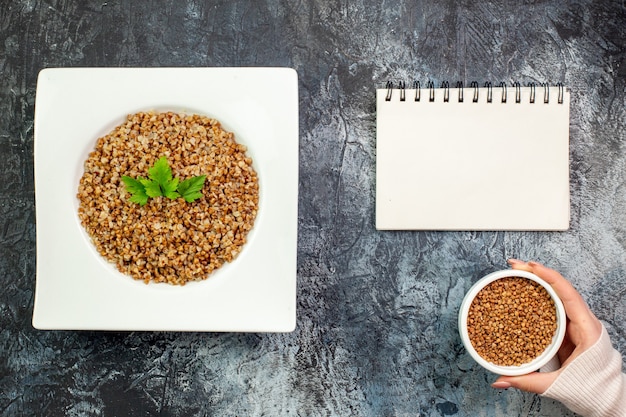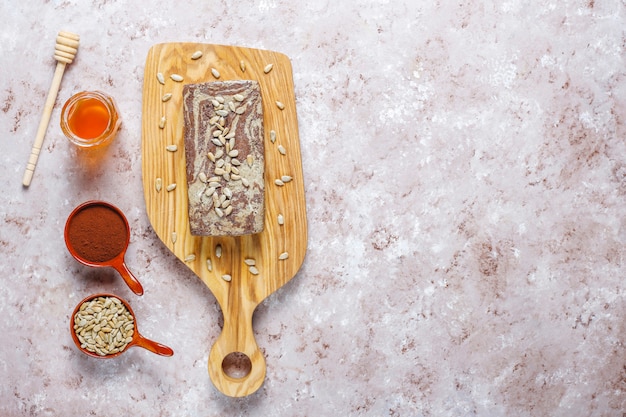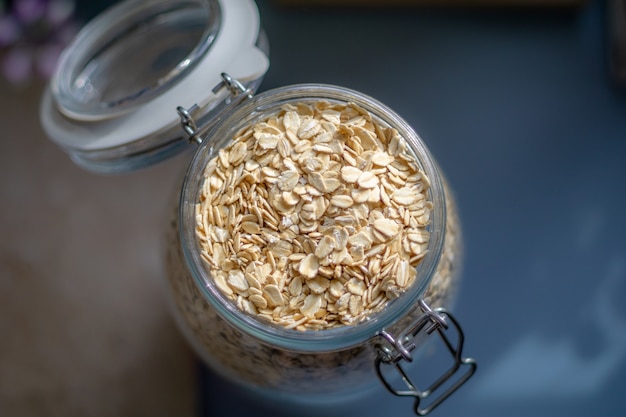Let's talk about barley. You know, that often-overlooked grain that's been a staple for centuries, yet often gets overshadowed by its flashier cousins like quinoa or couscous. Well, I'm here to sing the praises of barley, my friends. It's incredibly versatile, packed with nutrients, and can be the star of so many delicious dishes. Plus, it's surprisingly easy to cook, once you know a few tricks. So, grab a cuppa (or a glass of something stronger), settle in, and let's dive into the wonderful world of barley!
(Part 1) Getting to Know Barley: The Humble Grain with a Big Flavor

The History of Barley
Barley has been a part of human history for thousands of years. It's one of the oldest cultivated grains, dating back to the Neolithic period, and it's been a staple food in many cultures around the world. In fact, it was a key ingredient in ancient Egyptian bread, and it's even mentioned in the Bible. It's a true testament to its versatility and resilience.
What is Barley?
Barley is a whole grain, like rice or oats, but it's got a unique character. It's a great source of fibre, protein, and essential vitamins and minerals, making it a nutritional powerhouse. Think of it as the hearty, earthy, and satisfying sibling of the grain family. You'll often find it in two forms: pearl barley and hulled barley.
Pearl Barley vs. Hulled Barley: Choosing Your Grain
Let's break down the differences between these two types: pearl barley has had its outer husk removed and been polished, resulting in a smoother, quicker-cooking grain. It's like the polished, refined version of barley. Hulled barley, on the other hand, has only had the outer hull removed. It holds onto its bran and germ, giving it a nuttier flavour and a slightly chewier texture. It's the more rustic, natural version.
For my personal taste, I adore the rustic flavour and texture of hulled barley. It's got a real depth of flavour that reminds me of comforting home-cooked meals. Pearl barley is a great option if you're looking for a faster cook time or prefer a smoother texture. But don't discount hulled barley - it's worth giving it a try!
Now that we've got the basics down, let's explore the exciting ways you can use barley!
(Part 2) Beyond the Basic: Unleashing Barley's Versatility in the Kitchen

barley risotto: A Creamy, Comforting Delight
I must confess, I was skeptical about barley risotto at first. It sounded a bit odd, like a departure from tradition. But then, I gave it a try. And wow! It was absolutely delicious. The barley lends a wonderful nutty flavour and a satisfyingly chewy texture that's unique from traditional rice risotto. It's like a comforting hug in a bowl. Plus, it's a fantastic way to use up leftover barley. I especially love to make a barley risotto with sautéed mushrooms and a drizzle of truffle oil - talk about a fancy dinner!
barley salad: A Fresh and Light Meal
Barley is a revelation in salads. It's hearty enough to hold its own against other ingredients, but also absorbs the flavours of the dressing beautifully. I love to toss barley with roasted vegetables like sweet potatoes and butternut squash, add some fresh herbs, and top it with a tangy vinaigrette. It's a perfect summer lunch or a light, healthy dinner.
barley soup: A Hearty and Nourishing comfort food
When the weather turns chilly, nothing beats a bowl of hearty barley soup. Think creamy tomato barley soup with a dollop of Greek yogurt, or a warming vegetable barley soup with a sprinkle of toasted nuts. Barley's mild flavour means it pairs well with a wide range of vegetables and spices, making it a perfect canvas for your creativity.
Barley in Other Dishes: Beyond the Obvious
Don't limit your barley imagination! You can use it in:
- Stuffed Vegetables: Add a handful of cooked barley to your favourite stuffed peppers, bell peppers, or squash for a hearty and delicious filling. It adds a lovely texture and depth to the filling.
- Meatballs and Meatloaf: For a healthier and more flavourful twist, incorporate cooked barley into your meatballs or meatloaf mixture. It adds moisture and texture, making them even more satisfying.
- Breakfast Bowls: Mix cooked barley with your favourite fruits, nuts, and seeds for a satisfying and nutrient-rich breakfast bowl. It's a great alternative to oatmeal and offers a different texture.
- Stuffed Chicken: Barley can be a fantastic addition to stuffed chicken breasts. It absorbs the juices and spices, creating a flavourful and filling meal.
- Shepherd's Pie: A classic comfort food, shepherd's pie gets a healthy upgrade with the addition of barley. It adds a hearty texture and nutty flavour to the filling.
(Part 3) The Ultimate Guide to Cooking Perfect Barley: Mastering the Basics

Now, let's dive into the heart of the matter: how to cook perfect barley. It's easier than you think.
Choosing the Right Barley
As I mentioned earlier, you have the choice between pearl barley and hulled barley. For a quicker cook time and a softer texture, opt for pearl barley. If you want a more rustic flavour and a chewier texture, go for hulled barley. Remember, both types are equally delicious and offer unique qualities.
Prepping the Barley
Give your barley a quick rinse under cold water to remove any debris. This is especially important for hulled barley, as it can contain small bits of husk. You can skip this step for pearl barley, but it won't hurt.
The Ratio: Barley to Liquid
The magic ratio for cooking barley is 1 cup of barley to 3 cups of liquid. This could be water, broth, or even milk, depending on the recipe. Remember, it's always better to start with a little less liquid and add more if needed.
Choosing the Right Pot
Use a pot with a lid that fits snugly to prevent evaporation. A large saucepan or a dutch oven is ideal. And make sure it's big enough to accommodate the barley and liquid without overflowing.
The Cooking Method: Stovetop vs. slow cooker
There are two main ways to cook barley: stovetop and slow cooker.
Stovetop Method
This is the most common method and it's super easy. Here's how to do it:
- In a large pot, bring the liquid to a boil over high heat. Add the barley and reduce the heat to a simmer. Cover the pot and cook for 30-45 minutes, or until the barley is tender but still has a slight bite.
- If the liquid is absorbed before the barley is cooked, add more water or broth as needed. You can also use a wooden spoon to gently stir the barley every now and then.
- Once the barley is cooked, drain off any excess liquid, if desired. Let the barley cool slightly before using it in your recipe.
slow cooker method
This method is perfect for those who want a hands-off approach. Here's how to do it:
- Combine the barley and liquid in your slow cooker. Season with salt and pepper to taste. Cover and cook on low heat for 6-8 hours, or on high heat for 3-4 hours.
- Once the barley is cooked, fluff it with a fork and enjoy.
(Part 4) Barley cooking tips and Tricks: Elevating Your Barley Game
Here are some helpful hints to ensure your barley is always cooked to perfection:
Don't Overcook
Overcooked barley can become mushy and lose its flavour. Keep a close eye on it during the last 10 minutes of cooking. Check for tenderness with a fork. If it feels like it's getting too soft, turn off the heat and let it sit for a few minutes.
Salt Matters
Salt is key to bringing out the flavour of barley. Don't be shy with the salt! Add it to the water or broth at the beginning of the cooking process.
Adjust Liquid According to Recipe
For some recipes, like barley risotto, you may need to adjust the liquid ratio. Start with a little less liquid than usual and add more as needed.
Use Broth for Extra Flavour
For extra flavour, use broth instead of plain water. vegetable broth works well with most barley recipes, while chicken or beef broth adds a savory flavour to hearty soups or stews.
Explore flavor combinations
Don't be afraid to experiment with different flavours. Try adding herbs, spices, or even citrus zest to your barley for a unique twist. For example, a pinch of smoked paprika adds a smoky depth to barley soup, while a squeeze of lemon juice brightens up a barley salad.
Add Aromatics
Sautéing aromatics like onions, garlic, or ginger in the pot before adding the barley can add a delicious depth of flavour. It's a simple step that makes a big difference.
(Part 5) Barley Storage Tips: Keeping Your Barley Fresh
Once cooked, you can store leftover barley in the fridge for up to 5 days. Here's how:
- Allow the cooked barley to cool completely.
- Store it in an airtight container in the refrigerator.
- When reheating, add a splash of water or broth to prevent dryness.
You can also freeze cooked barley for up to 3 months. Here's how:
- Allow the cooked barley to cool completely.
- Spread the barley in a single layer on a baking sheet and freeze for about 1 hour.
- Transfer the frozen barley to an airtight freezer-safe bag or container.
- When ready to use, thaw the frozen barley overnight in the refrigerator or in the microwave on low power.
(Part 6) barley nutrition: A Healthy and Versatile Grain
Barley is a nutritional powerhouse. It's a good source of fibre, protein, and essential vitamins and minerals. Here's a breakdown of some of the key nutrients found in barley:
| Nutrient | Amount per 1/2 Cup Cooked Barley |
|---|---|
| Calories | 100 |
| Fiber | 3 grams |
| Protein | 3 grams |
| Vitamin B6 | 0.1 mg |
| Magnesium | 26 mg |
| Iron | 1.2 mg |
In addition to these nutrients, barley is also a good source of antioxidants and anti-inflammatory compounds. It's been linked to a number of health benefits, including lower cholesterol levels and a reduced risk of heart disease and type 2 diabetes.
So, barley is not only delicious but also a healthy choice for your diet. It's a great way to add some variety and nutrition to your meals.
(Part 7) Barley Recipes: Unleash Your Inner Chef
Now, it's time to get cooking! Here are a few of my favourite barley recipes that are both delicious and easy to make:
1. Creamy Mushroom Barley Risotto
Ingredients:
- 1 cup pearl barley, rinsed
- 3 cups vegetable broth
- 1 tablespoon olive oil
- 1 onion, chopped
- 2 cloves garlic, minced
- 1 pound mushrooms, sliced
- 1/2 cup white wine (optional)
- 1/4 cup grated Parmesan cheese
- Salt and pepper to taste
- Fresh parsley, chopped, for garnish
Instructions:
- Heat the olive oil in a large saucepan over medium heat. Add the onion and cook until softened, about 5 minutes.
- Add the garlic and cook for 1 minute more.
- Add the mushrooms and cook until softened, about 5 minutes.
- Pour in the vegetable broth and bring to a boil.
- Add the barley and reduce the heat to a simmer. Cover and cook for 30 minutes, or until the barley is tender but still has a slight bite.
- Stir in the white wine, if using, and the Parmesan cheese. Season with salt and pepper to taste.
- Garnish with fresh parsley and serve immediately.
2. Roasted Vegetable Barley Salad
Ingredients:
- 1 cup hulled barley, rinsed
- 3 cups vegetable broth
- 1 sweet potato, peeled and diced
- 1 butternut squash, peeled, seeded, and diced
- 1 red onion, diced
- 1/2 cup chopped walnuts
- 1/4 cup dried cranberries
- Salt and pepper to taste
- For the vinaigrette:
- 1/4 cup olive oil
- 2 tablespoons balsamic vinegar
- 1 tablespoon Dijon mustard
- Salt and pepper to taste
Instructions:
- Preheat oven to 400 degrees F (200 degrees C).
- In a large bowl, toss the sweet potato, butternut squash, and red onion with olive oil, salt, and pepper. Spread on a baking sheet and roast for 20-25 minutes, or until tender.
- While the vegetables are roasting, cook the barley according to the instructions above.
- In a small bowl, whisk together the ingredients for the vinaigrette.
- In a large bowl, combine the cooked barley, roasted vegetables, walnuts, and cranberries. Pour the vinaigrette over the salad and toss to combine.
- Serve immediately or chill for later.
3. Hearty Tomato Barley Soup
Ingredients:
- 1 cup pearl barley, rinsed
- 3 cups vegetable broth
- 1 tablespoon olive oil
- 1 onion, chopped
- 2 cloves garlic, minced
- 1 (28 ounce) can crushed tomatoes
- 1 (15 ounce) can diced tomatoes, undrained
- 1 teaspoon dried oregano
- 1/2 teaspoon salt
- 1/4 teaspoon black pepper
- Fresh basil, chopped, for garnish
Instructions:
- Heat the olive oil in a large pot over medium heat. Add the onion and cook until softened, about 5 minutes.
- Add the garlic and cook for 1 minute more.
- Pour in the vegetable broth and bring to a boil.
- Add the barley, crushed tomatoes, diced tomatoes, oregano, salt, and pepper. Reduce the heat to a simmer, cover, and cook for 30 minutes, or until the barley is tender.
- Garnish with fresh basil and serve immediately.
(Part 8) FAQs: Your Barley Questions Answered
I know you might have some questions about barley. Here are answers to some of the most common ones:
1. Can I use barley in place of rice in any recipe?
You can certainly try it, but keep in mind that barley has a chewier texture than rice and absorbs liquids differently. For some recipes, like risotto, barley can be a great substitute. For others, like sushi rice, it may not be ideal.
2. How long can I store cooked barley in the refrigerator?
You can store cooked barley in the refrigerator for up to 5 days in an airtight container.
3. Can I freeze cooked barley?
Yes, you can freeze cooked barley for up to 3 months. To freeze, spread the cooled barley in a single layer on a baking sheet and freeze for about 1 hour. Then, transfer the frozen barley to an airtight freezer-safe bag or container.
4. Is there any difference between pearl barley and hulled barley?
Yes, pearl barley has had its outer husk removed and been polished, resulting in a smoother, quicker-cooking grain. Hulled barley has had only the outer hull removed, so it holds onto its bran and germ, giving it a nuttier flavour and a slightly chewier texture.
5. What can I do with leftover barley?
The possibilities are endless! Use it to make barley salad, barley risotto, barley soup, or add it to your favourite stuffed vegetables, meatballs, or meatloaf. It's a great way to avoid food waste and create delicious meals.
There you have it - everything you need to know about cooking perfect barley. So, what are you waiting for? Get out there, cook up a storm, and let me know what you think!
Everyone is watching

Corn on the Cob: The Ultimate Guide to Perfectly Cooked Ears
Healthy MealsAh, corn on the cob. Just the name evokes images of sunny days, barbecues, and that sweet, juicy flavour that ...

Perfect Pork Roast Oven Cooking Time: A Guide to Delicious Results
Healthy MealsThere's something truly satisfying about a perfectly roasted pork. The aroma alone is enough to make your mout...

Ham Cooking Time: How Long to Bake, Smoke, or Boil a Delicious Ham
Healthy MealsAh, ham. It's a classic, isn't it? A real crowd-pleaser, especially around holidays. And when done right, it'...

Scallops: The Ultimate Guide to Perfect Cooking
Healthy MealsAh, scallops. Those delicate, sweet, and utterly delicious morsels of the sea. They hold a special place in my...

Spaghetti Squash: The Ultimate Guide to Cooking and Serving
Healthy MealsRemember that time you saw spaghetti squash at the supermarket, looking all bumpy and strange, and thought, "W...
